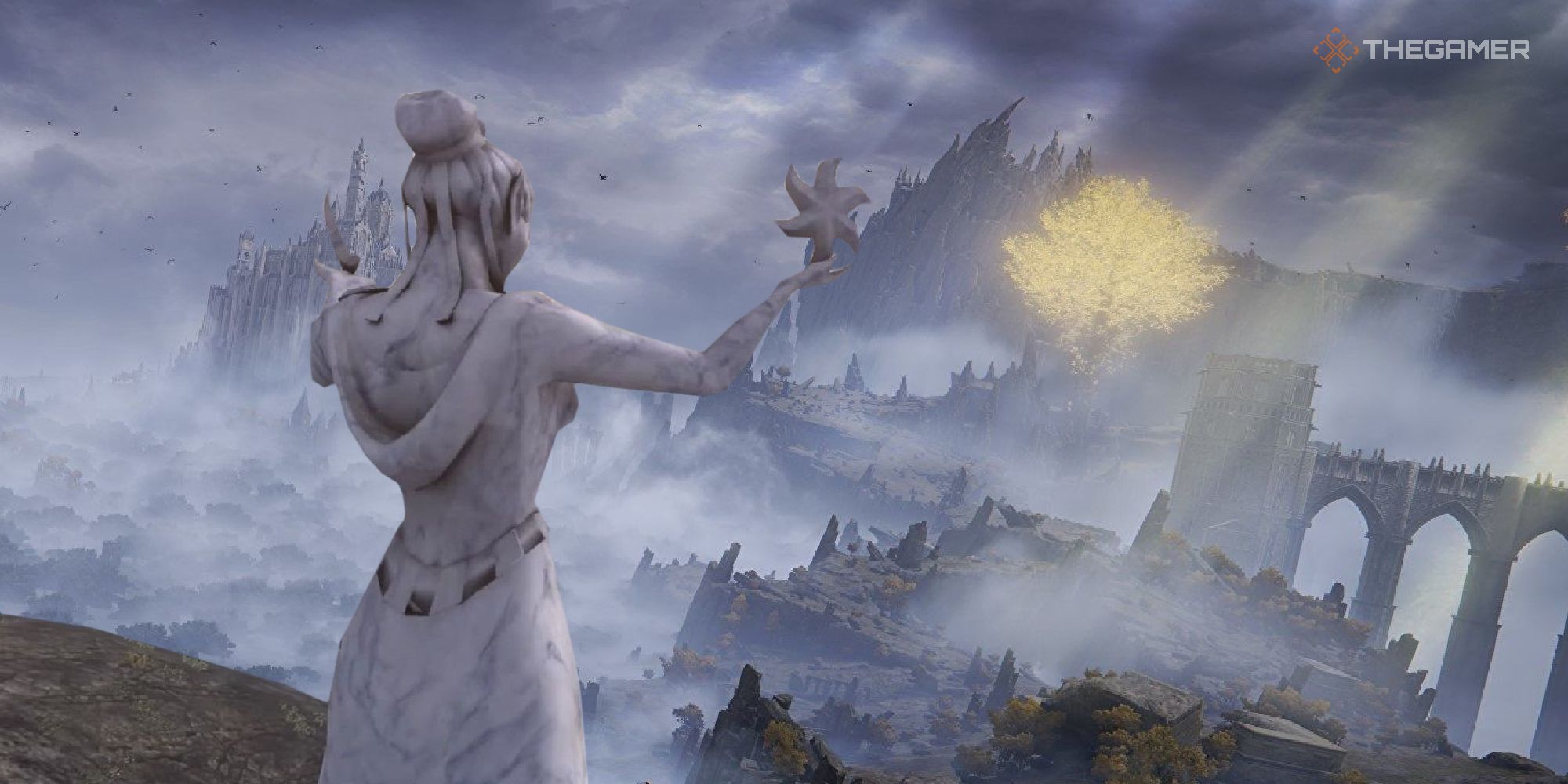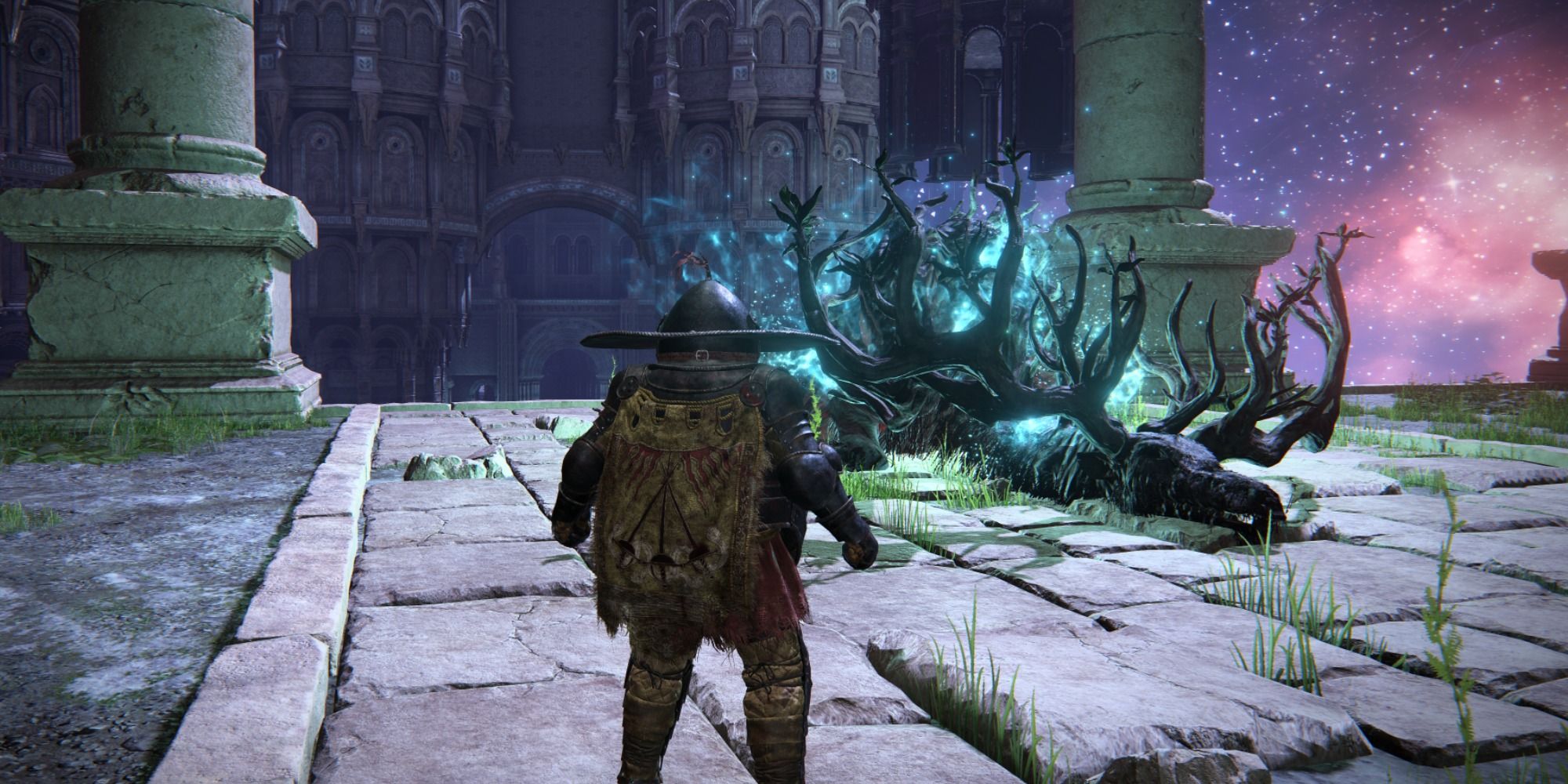You arrive in Morrowind on a prison boat, your papers stamped and your mandatory duties handed to you on a scribbled piece of parchment. You’re instructed to venture to Balmora where you’ll meet a drug-addicted spymaster with a penchant for raunchy argonian fiction. You can take the strider or you can wander the beaten path, using landmarks to find your way. There are no map markers and your journal is made up of vague notes you’ve taken from dialogue. It’s open-ended, pushing you to look at the world around you instead of big white objective markers. This kind of approach had died out almost entirely, but Elden Ring brings it back.
Elden Ring’s opening is different in a literal sense but thematically identical. You crawl out of a dark, dank cave to find a hooded man mocking you, almost like Jiub in Morrowind. You're given a target, but there’s no set path to follow. It’s freeing. I’m tired of open-world games that stick you on linear roads, pushing you along a steady incline in difficulty. In Elden Ring, I can head right to Caelid and fight dragons to grow to new heights, much as I could venture to Red Mountain in Morrowind to find myself a daedric weapon or two. You’re given an unusual amount of agency which is perfect for an RPG. It’s easy to forget what that ‘RP’ stands for.
You can follow that path directly, reach your objective, and stick to the main quest. But it’ll be tough. That skooma-addicted agent you’re meant to meet says as much, telling you that you need to get stuck into Morrowind and learn how to fight before trying your hand at anything major, but you can ignore him if you really want. That’s what Margit does, although it’s less direct. With no map markers, you’re forced to keep an eye on your surroundings, taking in the world around you, but there are ample visual cues that the game builds up as its own language. Ruins aren’t just decorative fluff to make the world feel alive - they always have a staircase going down to hidden treasure or a boss’ inner sanctum.
It’s much like travelling along Morrowind’s roads, you’ll see the curved architecture of a crypt inviting you in, golden towers of the dwemer, the black-and-red ruins of Daedric Princes, and rundown bandit camps, all signposted by similar designs to tell you that there’s something worth taking a detour for. The game never tells you where to go - except it does. You just need to speak its language. It doesn't communicate in arrows or map markers or heroes who talk to themselves and say, “Maybe I should look in that cave for a clue.” It talks to you through doors, through shadows, through the familiar and the unfamiliar. You have to pay attention, listen to what people are telling you, and piece together stories like you’re a medieval Sherlock Holmes.
You have the notes in your journal, the quick scrawlings you’ve made from dialogue, and new prompts to dig deeper into with other strangers you meet. What’s this Solstheim people are talking about? Maybe the town guard has more info, so you prod, and they tell you about a boat in a faraway city. That’s my next stop. Elden Ring captures that same feeling of being a sleuth, the quests organically intertwined into the world. Only instead of a journal, we’re sifting through item descriptions, taking in the unreliable word of an unknown narrator, while NPCs crop up at random spots on our quest, asking for help or trying to plunge a knife into our back. The key similarity between Morrowind and Elden Ring is that the world demands you keep your eyes glued to it.
I love vague directions like being told to walk along the river, pass two bridges, and take a right. I love the NPCs who give you little clues to quests that you have to piece together yourself instead of relying on a map marker to do the dirty work - who killed the tax collector? You have to dig around, talk to people, and find out for yourself. That sense of discovery is immaculate. I felt it again when I went looking for the Roundtable knights’ lost ward, only to find him in the swamp, standing over her dead body. I’m not dotting about, going from question mark to question mark. I’m not going through a checklist of tasks. Every time I return to Limgrave, I’m finding something new that I missed before, just like when I go back to Seyda Neen.
Most open worlds now feel like chores. It’s a job, with a percentage completion rate slowly rising, constantly reminding you this is a game to be played in one specific way as you finish arbitrary, repetitive tasks. You embark on endless fetch quests, purging your map of the needless icons that clutter it. Morrowind and Elden Ring’s worlds unfold naturally making you a cartographer, not a player. That’s what makes exploration so much more immersive and engrossing, and I never thought I’d feel that same sense of wonder in simply wandering around a fictional world. There’s so much to unpack. There’s never an empty space. There’s always something for me to spot and run toward.






